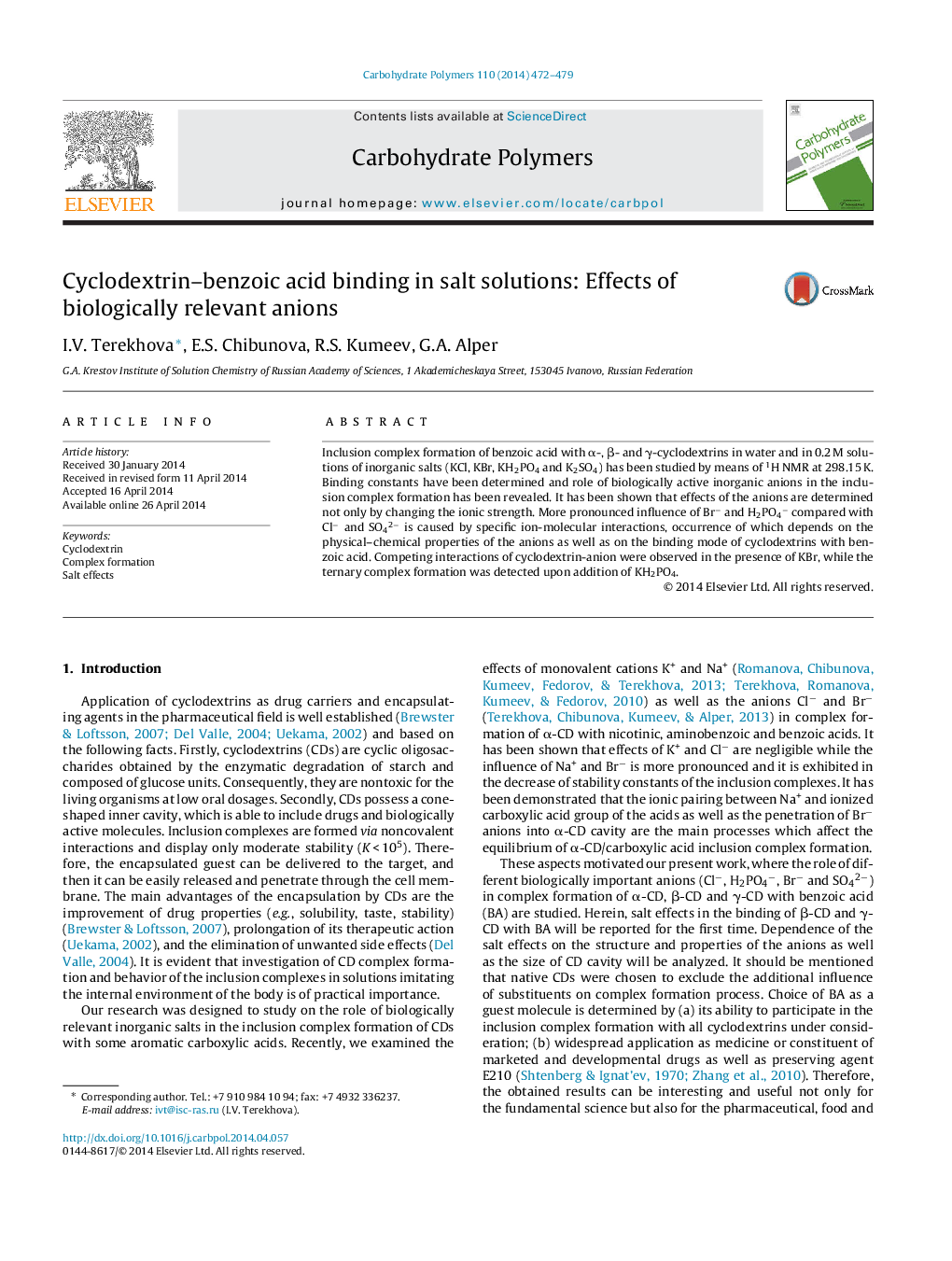| Article ID | Journal | Published Year | Pages | File Type |
|---|---|---|---|---|
| 1385858 | Carbohydrate Polymers | 2014 | 8 Pages |
•Complex formation of cyclodextrins with benzoic acid was studied in salt solutions.•Effects of inorganic anions (Cl−, Br−, H2PO4−, SO42−) were revealed.•Change of the activity coefficients is not only one factor affecting the binding.•Additional ion-molecular interactions can influence the inclusion complex formation.•Ternary complex formation CD/BA/anion is possible in the presence of H2PO4−.
Inclusion complex formation of benzoic acid with α-, β- and γ-cyclodextrins in water and in 0.2 M solutions of inorganic salts (KCl, KBr, KH2PO4 and K2SO4) has been studied by means of 1H NMR at 298.15 K. Binding constants have been determined and role of biologically active inorganic anions in the inclusion complex formation has been revealed. It has been shown that effects of the anions are determined not only by changing the ionic strength. More pronounced influence of Br− and H2PO4− compared with Cl− and SO42− is caused by specific ion-molecular interactions, occurrence of which depends on the physical–chemical properties of the anions as well as on the binding mode of cyclodextrins with benzoic acid. Competing interactions of cyclodextrin-anion were observed in the presence of KBr, while the ternary complex formation was detected upon addition of KH2PO4.
